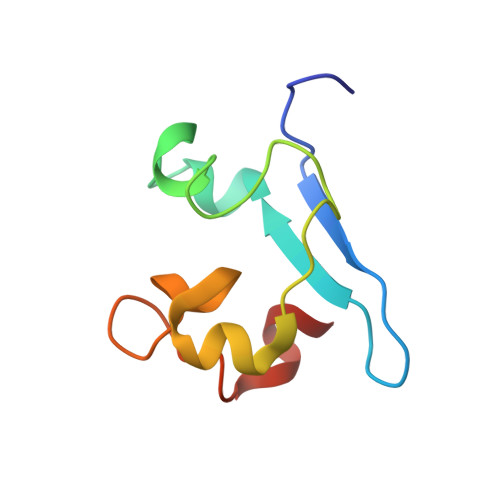Structure of a novel c7-type three-heme cytochrome domain from a multidomain cytochrome c polymer.
Pokkuluri, P.R., Londer, Y.Y., Duke, N.E.C., Erickson, J., Pessanha, M., Salgueiro, C.A., Schiffer, M.(2004) Protein Sci 13: 1684-1692
- PubMed: 15133162
- DOI: https://doi.org/10.1110/ps.04626204
- Primary Citation of Related Structures:
1RWJ - PubMed Abstract:
The structure of a novel c(7)-type cytochrome domain that has two bishistidine coordinated hemes and one heme with histidine, methionine coordination (where the sixth ligand is a methionine residue) was determined at 1.7 A resolution. This domain is a representative of domains that form three polymers encoded by the Geobacter sulfurreducens genome. Two of these polymers consist of four and one protein of nine c(7)-type domains with a total of 12 and 27 hemes, respectively. Four individual domains (termed A, B, C, and D) from one such multiheme cytochrome c (ORF03300) were cloned and expressed in Escherichia coli. The domain C produced diffraction quality crystals from 2.4 M sodium malonate (pH 7). The structure was solved by MAD method and refined to an R-factor of 19.5% and R-free of 21.8%. Unlike the two c(7) molecules with known structures, one from G. sulfurreducens (PpcA) and one from Desulfuromonas acetoxidans where all three hemes are bishistidine coordinated, this domain contains a heme which is coordinated by a methionine and a histidine residue. As a result, the corresponding heme could have a higher potential than the other two hemes. The apparent midpoint reduction potential, E(app), of domain C is -105 mV, 50 mV higher than that of PpcA.
Organizational Affiliation:
Biosciences Division, Argonne National Laboratory, Argonne, IL 60439, USA.















